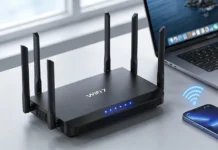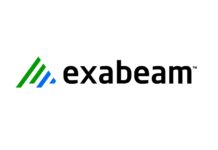Nokia Siemens Networks (NSN) has released the second edition of the MBit Index, a report on mobile broadband performance in India.
In the first edition, the company focused on growth trends in 2G, 3G and the overall data traffic at the pan-Indian and circle levels. It also compared data consumption per user on 2G and 3G networks between December 2011 and June 2012. In the second edition, the study examines all the aforementioned trends for 2012 and those in current data device usage in India.
The primary objective of the MBiT Index is to highlight time series-based statistics and insights about the growth in mobile broadband traffic in India and correlate these trends with the changes in various ecosystem drivers such as subscriber usage patterns and coverage.
The MBit Index has been established by tracking the actual data payload generated in 2012 on all 2G (GPRS and EDGE) and 3G networks operated by NSN for multiple Indian operators. It provides an aggregated view of how 2G and 3G subscribers in India are using data services.
Overall findings
Growing mobile broadband usage
As per NSN, mobile data usage (2G and 3G) almost doubled in India in 2012 which was mainly driven by 3G service uptake.
Increasing 3G uptake
3G usage grew threefold in 2012 over the previous year. Going forward, as the overall ecosystem (network coverage, devices and local content) improves, 3G penetration will increase significantly. In comparison, 2G services witnessed stable growth in the latter half of 2012.
Lower 3G tariffs drive service uptake
3G service uptake has increased following a tariff reduction by operators in mid-2012, especially in the metros and category A circles. 3G currently constitutes one-third of all mobile data transactions as compared to one-fourth in mid-2012.
Category A circles drive 3G demand
These circles currently account for 42 per cent of total 3G data usage in India.
Growing use of smartphones to access mobile data
About 50 per cent of overall mobile data is being accessed through smartphones. Of this, 45 per cent is being accessed by customers in category A circles.
Trends in mobile broadband at the pan-Indian level
The share of 3G in total mobile data transactions increased from 25 per cent in mid-2012 to 33 per cent in end-2012.
Meanwhile, 3G usage increased by 196 per cent between 2011-12 and 2012-13. It is emerging as the preferred mobile access technology. The number of active 3G users increased by 142 per cent during this period.
On an average, the price gap between 3G and 2G services reduced from 7x in early 2012 to 2x at end-2012. This has been one of the key drivers for 3G service growth in India.
2G data services (GPRS/EDGE), which currently account for two-thirds of the total mobile data, witnessed a growth of 66 per cent between 2011-12 and 2012-13.
On an average, each 3G customer uses 3.7 times more data as compared to a 2G user. Currently, each 3G customer uses 434 MB of data per month while a 2G customer uses 115 MB.
The average 3G data consumption per user increased by 28 per cent between 2011-12 and 2012-13 as against a 32 per cent growth in 2G services. This is an encouraging trend, despite the base effect (3G data usage increased manyfold as compared to 2G at the beginning of 2012).
Category-level mobile broadband trends
The metros (11 per cent of the population covered) account for 21 per cent of mobile data usage. These cities witnessed the highest 3G uptake across circles in 2012. 3G services account for 35 per cent of the total mobile data usage in the metros. In comparison, 2G data usage is stabilising.
Category A circles (35 per cent of the population covered) account for 40 per cent of the total mobile data usage. Tariff reduction led to a 108 per cent increase in 3G data usage in the second half of 2012 as compared to 70 per cent growth in the first half of the year.
Category B circles (40 per cent of the population covered) account for 31 per cent of the total mobile data usage. 2G users account for 75 per cent of the total data usage in these circles, which accounts for 34 per cent to the total 2G data consumption and 26 per cent to the total 3G data consumption.
Category C circles (14 per cent of the population covered) account for 8 per cent of the total mobile data usage, driven mainly by the 2G data segment. This can be attributed to the low user base.
Data usage trends across devices
Although smartphone penetration stands at only 6 per cent, 50 per cent of mobile data (2G and 3G) is accessed through these devices. Meanwhile, 30 per cent of overall mobile data is being accessed through feature phones.
Most customers with 3G-enabled smartphones still access mobile data through 2G.
Users in Category A circles are most likely to avail of smartphone-based data services. While these circles account for 45 per cent of the overall smartphone-based data usage, half of the smartphone users in these circles access mobile data on 2G networks. This presents a key opportunity for 3G service providers.
In the Category B and C circles, 3G data usage through smartphones has been much lower than the national average. These circles also have access to a limited number of fixed network options. Therefore, the 3G segment offers significant potential in these circles, if operators improve network coverage and appropriate knowledge about the delivery channel is provided to retailers and distributors.
In 2012, the Indian smartphone segment witnessed one of the highest growth rates in the world. The smartphone user base increased by over 50 per cent during this year. This is a positive trend for 3G uptake as globally, the technology’s penetration has increased with the growth in smartphone use.
Device bundling, including reverse subsidies (offering the device at the market retail price and subsidising the data plan), and launching operator-branded smartphones are expected to increase smartphone penetration in India. This will drive the 3G market.



















